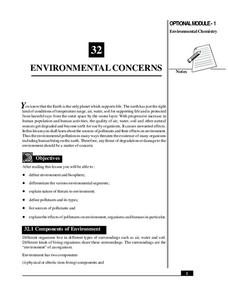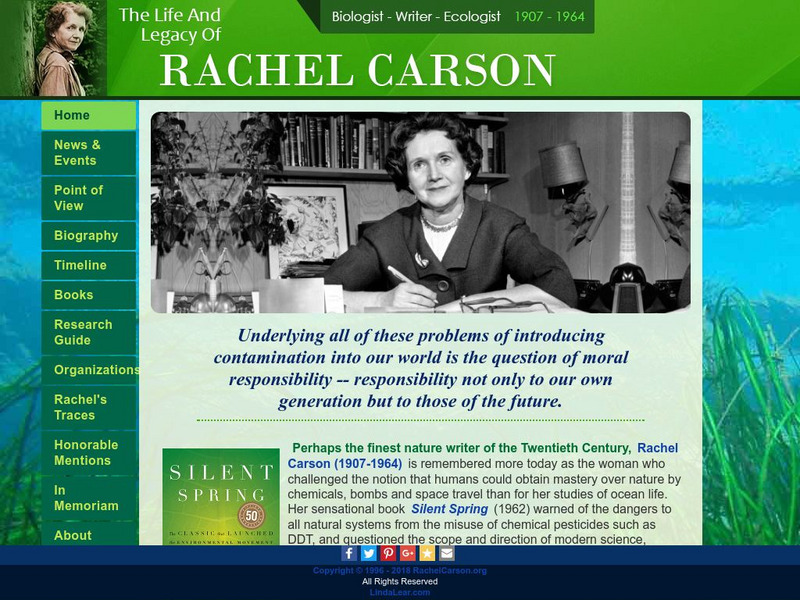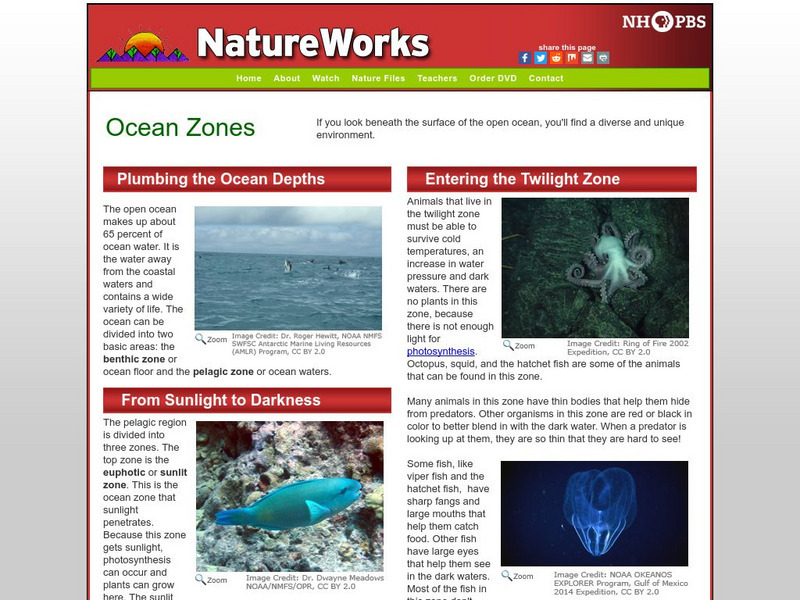National Institute of Open Schooling
Environmental Concerns
Every year, more than 14 billion pounds of garbage is dumped into the oceans of the world, most of which is plastic and toxic to ocean life. Lesson 32 in the series of 36 focuses on environmental concerns, specifically pollution. Under...
New York State Department of Environmental Conservation
Adaptations – Designs for Survival
What's the difference between behavioral adaptations and physical adaptations? Learn about the various ways that organisms adapt to their environment with a worksheet about the creatures of the Hudson River.
Rainforest Alliance
How Do Jaguars and Howler Monkeys in Belize Depend on Us?
How does weather play a role in the lives of land and sea creatures? Find out with a lesson plan focused on habitats and the ways animals from different homes are connected. Here, learners explore how the life of a jaguar and...
NOAA
Thunderstorms, Tornadoes, Lightning. . . Nature's Most Violent Storms
Thunderstorms, tornadoes, floods, and hail are just a few of the topics covered in a thorough weather preparedness guide. With descriptions of each weather phenomenon, from what causes them to how and when they occur to...
WindWise Education
How Does Energy Affect Wildlife?
Is wildlife affected the same way by different electricity generation methods? Teams work together to research four electricity generation sources and their impacts on wildlife. The teams create a summary report and share their...
Wilderness Classroom
Pollution
Educate scholars on pollution—air, water, and land—with a series of lessons that begin with a thorough explanation of each type. Learners then take part in three activities to reinforce the importance of reducing pollution. They...
National Institute of Open Schooling
Water Pollution
Fifteen million children under the age of five die each year due to diseases in their drinking water. Water pollution is the topic of lesson 34 in the series of 36. Scholars, through reading and discussing, study numerous aspects of...
Teach Engineering
Get the Word Out at McDonald's!
To get the word out that the Great Pacific garbage patch (GPGP) contains millions of pounds of non-biodegrading plastics, individuals research the GPGP and write an article for a newsletter. Researchers present their facts in a...
Other
Minnesota 4 H: Environmental Science Career Guide [Pdf]
Browse this guide to careers in the field of environmental science. Includes potential employers and job possibilities in Minnesota.
US Department of Labor
Bureau of Labor Statistics: Science Technicians
Review information about what it's like to be a science technician. Includes details about expected salary and working conditions.
Science Struck
Science Struck: A Quick Guide to the Different Types of Archaeology
The field of archaeology has been specializations that investigate the past through many different lenses, e.g., environmental relationships, landscape study, and aerial investigation. This resource describes many of these specialties.
Other
Rachel Carson: The Life and Legacy of Rachel Carson
The home page for the Rachel Carson organization provides information on her life, work, and legacy.
US Department of Labor
Bureau of Labor Statistics: Environmental Scientists and Specialists
This resource provides occupational information about environmental scientists and specialists.
Environmental Education for Kids
Eek!: Community Action & Citizen Science: Pearl Louise Pohl
Pearl Louise Pohl was a gifted teacher who believed strongly in environmental conservation and spent her life dedicated to environmental causes.
Science Struck
Science Struck: A Helpful Guide to Understand the Photic Zone
The photic zone is the upper layer of the ocean where sunlight can penetrate and support photosynthesis. This article explains the characteristics of this zone, the food chain that exists there, the adaptations of the plants and animals,...
US Geological Survey
U.s. Geological Survey: Life of a Tsunami
Animations illustrating long-lasting tsunami waves once they strike a coast.
Science Struck
Science Struck: Ecological Systems Theory Simply Explained
Explains what the ecological systems theory is and it relates to child development. Looks at five environmental contexts that impact on a child's life and development. Provides examples of how different events within these frameworks...
PBS
Nh Pbs: Nature Works: Ocean Zones
Discover more about the underocean environment at this site that surveys animals, environmental factors such as light and temperature, currents, animals, plants, and the like.
US Department of Labor
Bureau of Labor Statistics: Physicists and Astronomers
Discover the work of physicists and astronomers. This resource includes the job outlook and salary expectations.
Other
Bright Hub: Technology Used to Collect Weather Data
Technology used to collect weather data employs a number of devices such as satellites and weather balloons to perform a very important function to our daily living; forecasting the weather.








![Minnesota 4 H: Environmental Science Career Guide [Pdf] Handout Minnesota 4 H: Environmental Science Career Guide [Pdf] Handout](https://d15y2dacu3jp90.cloudfront.net/images/attachment_defaults/resource/large/FPO-knovation.png)




